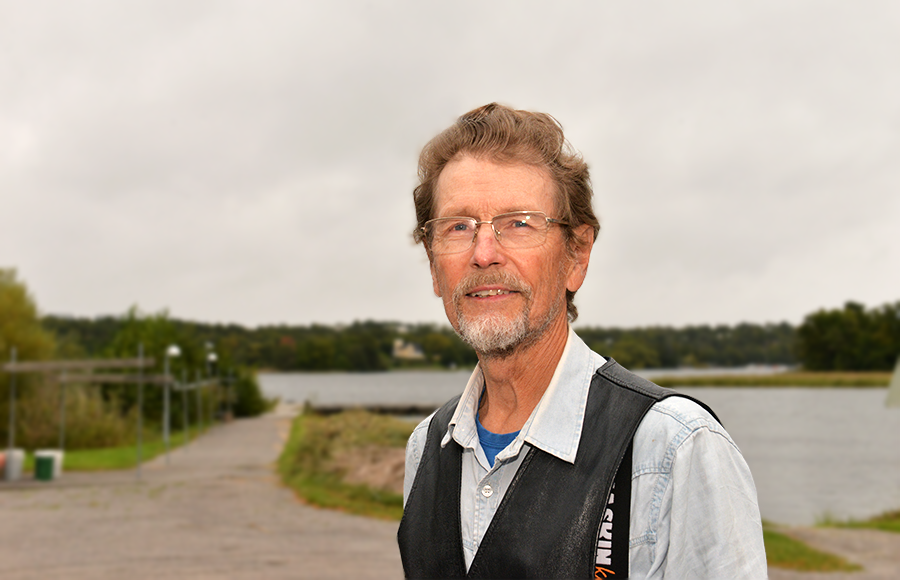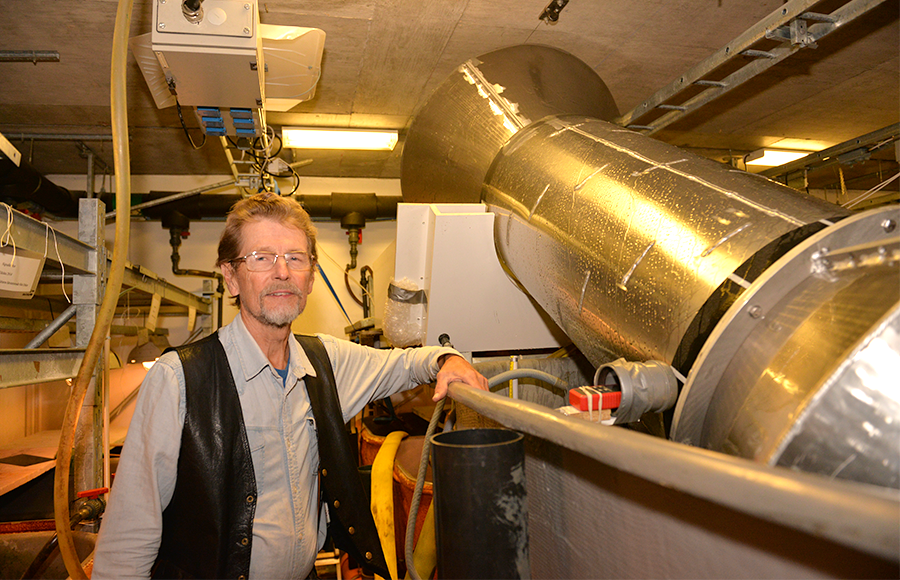
Transmoro – safe fishway creates more electricity production
"During my professional career I’ve often encountered problems around fish and hydroelectric power," says Arne Fjälling, fisheries biologist at SLU Aqua.
He says that over the years he has gone back to the need to find a general solution to the problem.
"Instead of starting from the existing solutions I commenced at the other end. What would a perfect solution look like?”
The only technology Fjälling thought had real potential in terms of fully contributing to avoidance of injury to fish was a closed Archimedes screw. One such screw has a helical channel mounted on an inclined shaft. As the device rotates, liquid or solid matter is moved to a higher or lower level.
The technical solution
His technical solution is a closed bidirectional Archimedes screw in which the bigger downward-flowing channel is centrally located and the smaller upward and counter-directional channel is on the outside. This allows fish to pass both up and down. Fish swim past the power plant from a lower water level to a higher one, or vice versa. At the same time water is transported downwards, and its energy is utilised to generate electricity.
"Part of the solution is a funnel-shaped opening that makes for a bright and open entrance for fish. This is very advantageous, because fish prefer not to enter small dark openings, as they resemble the throat of a big predator,” says Arne.
The design is adaptable, and can be installed in line with the requirements of individual power plants. This makes the solution of particular interest for small and medium-sized hydroelectric power plants.

Arne Fjällling and Transmoros protype. Photo: Tommy Harnesk/Ny Teknik
From concept to action
To make the concept into a reality, Arne says he investigated various options, and got in touch with SLU Holding. Through them he received help with novelty investigation concerning his concept, as well as with applications for patents and opportunities to establish contacts with interested parties.
"Over the years it’s been an educational measure and a form of support that have been very valuable. SLU Holding is now also a partner, and this shows they believe in the concept," he says.
"The concept saw a long maturation period. In a way, work on solving problems and on optimisation is still in progress. We’ve now come so far that we have a well-functioning model.”
At an early stage Arne was in contact with the technical physicist Gert Malmberg, who has 40 years’ experience of business development. Together with Gert and SLU Holding, the company Transmoro AB was formed. The name derives from Latin, and means "Past obstacles". The technical physicist Thomas Allard is now also part of the team, contributing his sound experience in business development, project management and company management.
"Transmoro's business concept is to offer a solution so as to ensure that fish can migrate in the watercourses, so Swedish power-plant owners can meet the requirements set by the EU. The USP is that our solution also generates hydroelectric power," says Gert Malmberg.
The requirements and the need
In Sweden there are just over 2,000 power plants, around 850 of which need rebuilding. Because of the EU requirements and stricter Swedish legislation, hydroelectric power stations need to create passageways for fish and other aquatic organisms. There is otherwise a risk of their permits not being renewed.
Gert Malmberg sees a big demand on the Swedish market for 20 years to come, and believes that Transmoro's "fish transporter", as he calls it, is attractive for many power-plant owners.
Arne Fjälling says people in the power-plant industry think the technical solution is a good idea. But they had two requirements. One is that the efficiency of a full-scale model should exceed 70%. The other is that the proportion of fish getting injured or dying should be less than 1%.
"Following trials, we can confirm that we’ve easily met the requirements. Efficiency is around 75%, and we can also state with 95% certainty that the true rate of injury to fish is less than 0.1% (in one experiment 406 passages took place, and not a single fish was injured).”
Next stage
The next stage of the process is to place the Archimedes double screw in the Experimentation Pool at SLU Aqua's fishery research station in Älvkarleby.
"The idea is to allow fish that are on a natural migration in a watercourse to pass through our solution. It’s an entirely natural situation whereby the fish themselves choose whether or not to use the passage. I think they will," Fjälling continues.
Gert Malmberg wants the "fish transporter" to be available at most hydroelectric power plants in Sweden within ten years.
"I hope it will become a well-established tool for striking a good balance between hydroelectric power and the environment.”
Arne Fjälling is optimistic about the future, and believes that the conditions are good.
"With society's great need for electricity there’s also increasing demand for our technical solution. Another positive aspect is that the public are very committed and knowledgeable about the environment and climate, so policy can be influenced.


